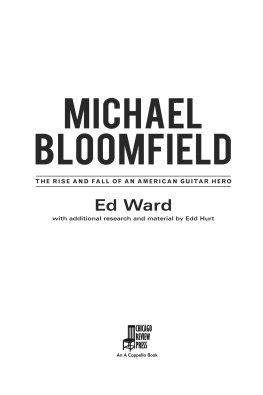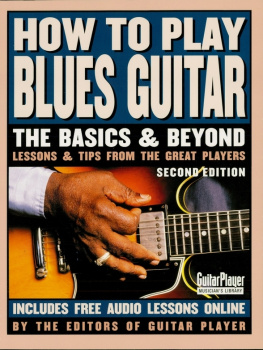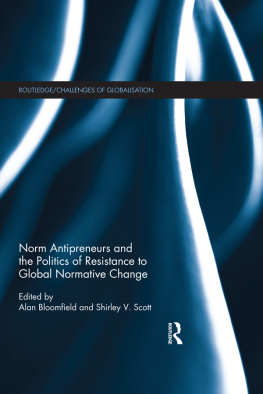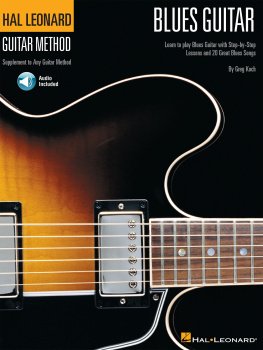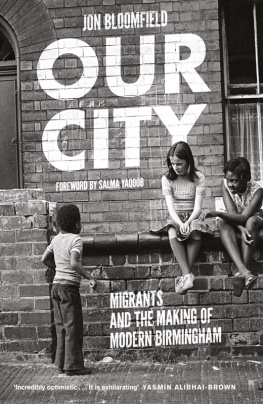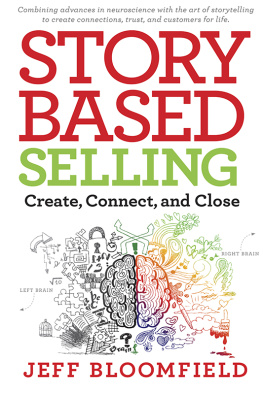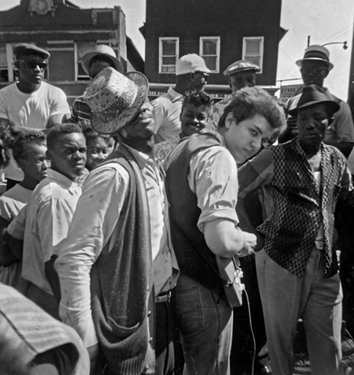Sommaire
Pagination de l'dition papier
Guide
Produced by Multiprises, LLC
Copyright 2016 by Multiprises, LLC
Foreword copyright 2016 by Billy F. Gibbons
Mark Naftalins Altar Songs reminiscences copyright 2016 by Mark Naftalin
Discography copyright 2016 by Multiprises, LLC, and William J. Levay
All rights reserved
Published by Chicago Review Press Incorporated
814 North Franklin Street
Chicago, Illinois 60610
ISBN 978-1-61373-331-8
Library of Congress Cataloging-in-Publication Data
Names: Ward, Ed, 1948
Title: Michael Bloomfield : the rise and fall of an American guitar hero / Ed Ward.
Description: Chicago, Illinois : Chicago Review Press, [2016] | Includes bibliographical references and index.
Identifiers: LCCN 2016019216 (print) | LCCN 2016020777 (ebook) | ISBN
9781613733288 (hardback) | ISBN 9781613733295 (PDF edition) | ISBN
9781613733318 (EPUB edition) | ISBN 9781613733301 ( Kindle edition)
Subjects: LCSH: Bloomfield, Michael. | GuitaristsUnited StatesBiography.
| Blues musiciansUnited StatesBiography.
Classification: LCC ML419.B58 W4 2016 (print) | LCC ML419.B58 (ebook) | DDC 787.871643092 [B] dc23
LC record available at https://lccn.loc.gov/2016019216
Typesetting: Nord Compo
Printed in the United States of America
5 4 3 2 1
This digital document has been produced by Nord Compo.
To the next kid who thinks he can amaze people when he picks up a guitar and starts to playand to the memory of Lester Bangs, a friend.
A NOTE TO THE READER
Ed Wards Michael Bloomfield: The Rise and Fall of an American Guitar Hero was first published, briefly, in 1983. This is a completely revised and greatly expanded edition with much new researchfor all intents and purposes a new book.
FOREWORD
by Billy F. Gibbons
T alk about impact... ! Talk about influence and inspiration! Were talking Bloomfield: Mike Bloomfield, guitarist and stylist extraordinaire. From distant observer to distinguished performer, Mike B. and his guitar ran the gamut, traversing all there was and would be within his vision, where guitar inventiveness became trademarked in his all-too-brief career.
Yes, were talking the one-and-the-same Bloomfield whose blues bloomed and boomed under the dexterous developments that dealt his hand and landed him in the game where he knew he wanted to be.
Sounding familiar... ? Perhaps so with the Bloomfield we came to know seemingly appearing from out of nowhere fast. Yet the overnight sensation was a long time in the making. Starting with that pawnshop six-string, the unraveling of the alluring mystique of sounds abounding all around in his very hometown began to make sense once the pieces to that powerful puzzle, them blues, began to gather. And it was this allure that became the stepping-stone to take his curiosity to the street. Although a stranger now frequenting those strange outposts of that strident sound, he was not alone. Several like-minded individuals were similarly drawn to the task of attempting to emulate the basics of that thing they were after.
So, banding together as newfound souls with a friendly sort of mutual bond was the obvious way in to getting way out, way outside any notion whatsoever of creating something predictable. Rather, some very unpredictable expressions began to emerge between Bloomfield and the aggregation with the likes of Paul Butterfield, Charlie Musselwhite, Nick Gravenites, Norman Dayron, guitarist Elvin Bishop, Barry Goldberg, and the fashionable Mark Naftalin. These were the guys surging toward forming this nucleus actually expressing something not only believablethey began laying down sound that was solid... sounds that were standing up to a stiff legion of loyalists not necessarily impressed with anything less than what the head honchos of the day were laying down with the late-night crowd. Muddy Waters had it, Jimmy Reed had it, Howlin Wolf more than had it... hell, it seemed like everybody on the South Side of Chi-Town either had it or was bound and determined to get it, and here Bloomfield was smack-dab in the midst of gettin it. And gettin down pretty hard.
Keep in mind this was mid-60s stuff. A time when people were waiting to get what they were wanting, waiting to feel what they all wanted to feel, and all of a sudden, all of it managed to find its way to wax. Bloomfield, wringing out his tasty additions for Butterfield and band, hit the mark. Mikes presence heard on those superb entries into the field are what we came to know and admire and ultimately have come to miss. This is where we might best leave it for now. Theres certainly a somewhat vague awareness of what came after right up to the end, yet Mikes legacy of tantalizing and tasteful tags on them blues luckily lingers on. Yes, were talkin Bloomfield.
INTRODUCTION
L ike a million other kids in the early 1960s, I bought a guitar, got as good as I could on it, and then bought a better one. I worked hard learning the licks that would impress, the songs that were important. I strove to take all ten fingers and make them crank the fast-picked ragtime melodies and make it all seem easy. I learned to bend strings in emulation of the great blues singers. And when my heroes began tending toward electric instruments, I defended them.
Bob Dylan, for instance. Hed gone electric at the Newport Folk Festival, but hed been writing songs that begged for electric instruments for some time. And Elektra, the folk music record label that was at the cutting edge of things, had just signed some hotshots from Chicago called the Paul Butterfield Blues Band, an integrated band that played blues, members of which had backed Dylan at Newport. If Elektra considered this folk music (and it was true that the pages of Sing Out!, the folkies bible, had been filled with the argument that Chuck Berry was a bluesman, and if that was true, so were the Rolling Stones), then so did I.
The Paul Butterfield Blues Bands debut album came out in the fall of 1965, and I dutifully bought it. I can safely say that this thirty-eight-minute record, titled simply The Paul Butterfield Blues Band, changed my life, disordered my perceptions, and totally rearranged the way I thought about popular and folk music.
There was this guitar player on the record, a guy who was doing stuff that was absolutely impossible, who was playing rapid-fire notes and sweet swoops, who howled and screamed, begged and teased, and held the entire record together. This guy had to be the Paul Butterfield the band was named for, because he was all I heard when I played the record. But no, Butterfield was the guy who honked his harmonica like a saxophone.
The guitarist, the album cover said, was someone named Mike Bloomfield.
Well, I tried. I sat there with my very good acoustic guitar, and I listened to those lightning attacks on the fingerboard, and I felt a tiny glow of triumph when I finally figured out, and could play, the Elmore James lick on Shake Your Money Maker. Several weeks later, when that was still the only lick Id learned, I began to get disillusioned. Slowly, it dawned on me that the typewriter was more my instrument than the guitar. It was all the fault of that Bloomfield character, but I guess it was all for the best.
Of course, he had just the opposite effect on a lot of people who had more talent on the guitar than I. In the course of researching this book, I have heard from innumerable guitar players, famous and not famous, good and not so good, and they all say, I started playing because of him, or I completely changed my style after I heard him play. (The great British guitarist Eric Clapton wasnt at all known over on US shores in those days.)

